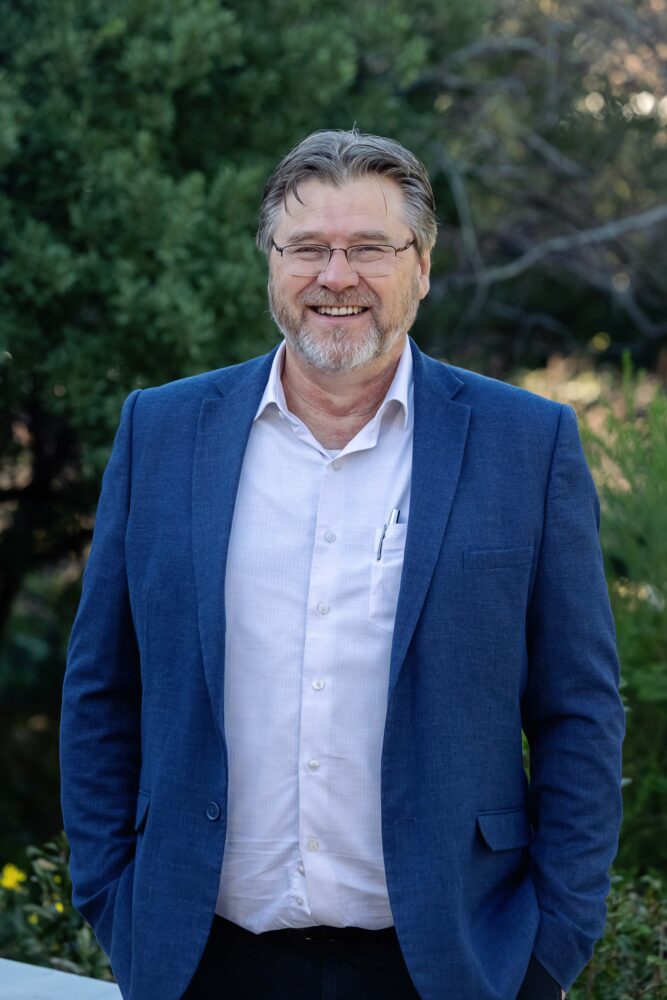Arbour Day, celebrated in the first week of September, he said, focuses on the huge global value of trees, which are an incredible resource for the world.
Planting trees is often touted as a simple fix for climate change. But, in Africa, indiscriminate tree planting can backfire — displacing biodiverse grasslands, depleting water resources and undermining rural livelihoods.
A new research initiative, the Southern African Trees for Climate Adaptation and Resilience (SAT-CARe) project, is working to uproot this.
Anchored at Stellenbosch University and developed with partners across the region, SAT-CARe is building an open-access, bioinformatics-based toolkit to guide the smarter use of indigenous trees in Southern Africa, with the aim of eventually expanding across the continent.
The digital toolkit will combine climate, soil, wildfire and socio-economic data with detailed species traits. Policymakers, farmers and urban planners will be able to identify which endemic African tree species are best suited for reforestation, urban greening, ecological restoration or livelihood support, avoiding poorly informed decisions to plant water-hungry alien species.
Tree planting is often presented as a cure-all, said Guy Midgley, the director of Stellenbosch University’s School for Climate Studies. “But planting the wrong trees in the wrong places can reduce biodiversity, threaten water security and damage livelihoods. We need science-based, locally informed decisions.”
 Guy Midgley, the director of Stellenbosch University’s School for Climate Studies
Guy Midgley, the director of Stellenbosch University’s School for Climate Studies
Midgley warned of Africa’s “afforestation problem” — not only through the spread of woody plants into grasslands driven by rising carbon dioxide levels, but also when external actors impose ill-advised tree-planting schemes on the continent.
“We see these big greening trends across our subcontinent,” he said. “It chokes up grasslands with shrubs, destroys people’s livelihoods and potentially increases water use. This is not a standard Northern Hemisphere challenge — it is our challenge and we need to develop our own models.”
Arbour Day, celebrated in the first week of September, he said, focuses on the huge global value of trees, which are an incredible resource for the world.
“We must also reflect on the correct and proper use of trees in response to stressors and pressures like climate change because, if we misuse this amazing resource, we risk altering ecosystems, sometimes irrevocably on the scale of a human lifetime.”
Planting trees, particularly non-indigenous trees in Africa into landscapes that are not naturally receiving of trees, risks altering livelihoods for a generation.
“This is because we end up building almost biologically sterile forests that may, in some instances, be very fire-prone, may also use excessive amounts of water, shade out natural grasslands and reduce the biodiversity of a whole range of plant and animal species.”
These species are dependent on open, sunlit African ecosystems, which are dominated by grasses that are disturbed by fire and are grazed by hundreds of ungulate species, he noted.
SAT-CARe’s practical goal is to identify which indigenous species thrive where — now and under future climate scenarios. The toolkit will cover well-known African species such as baobab, marula, mopane, sausage tree, miombo and yellowwood.
Farmers could use it to select trees for drought tolerance, fruit and oil production and livestock fodder, while urban planners could choose species that improve shade and air quality without straining scarce water supplies.
The project spans South Africa, Botswana, Mozambique, Namibia, Zambia and Zimbabwe, with additional input from Kenya, piloting models across ecosystems from savannas to montane forests.
“This is not just a data exercise for scientists,” said Kanshu Rajaratnam, the director of Stellenbosch University’s School for Data Science and Computational Thinking. “We are building models that communities and policymakers can use. Our goal is a digital toolkit that is as open and usable as possible.”
Users will be able to type in a species name, select a climate scenario and generate a map showing where that tree is likely to thrive, explained Jan Greyling, a senior lecturer in agricultural economics at the Faculty of AgriSciences.
For Midgley, SAT-CARe is also about shifting global dynamics. “Africa gets less than 3% of international funding for climate change science — and half of that goes to non-African scientists. We remain vulnerable because we’re not resourced to do the fundamental science we need.”
SAT-CARe forms part of the Africa-Europe Cluster of Research Excellence on Nature-based Solutions for Climate Change, convened by the African Research Universities Alliance and The Guild of European Research-Intensive Universities.
The cluster positions locally grounded, nature-based solutions as a way to cut climate risks while sustaining biodiversity and livelihoods.
“SAT-CARe is not just about trees in Southern Africa,” Midgley added. “It’s about African researchers taking the lead in generating knowledge that is locally grounded, but globally relevant.”